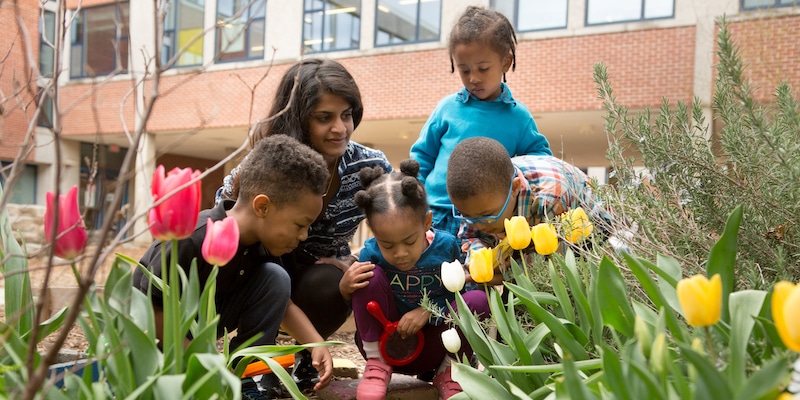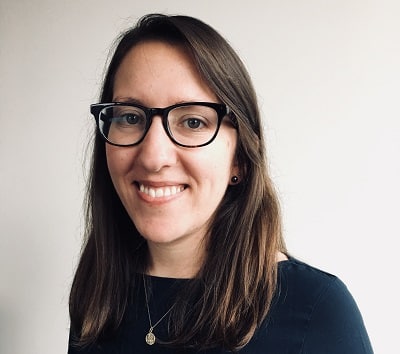Recently I told a group of high school students that my research investigates how schools are changing during the pandemic. One student’s unprompted reaction in the Zoom chat was so straightforward that it made me chuckle: “Oh we changed a lot.” Indeed.
The Canopy project, a collaborative effort to document school innovation across the country, endeavors to categorize and compare the nature of those changes. Starting in 2019, the project has issued calls to nominators—education non-profits, researchers, funders, and state agencies—to suggest schools on their radar that are innovating at a school-wide level. Leaders from nominated schools then participate by sharing details about their school models.
In September 2019, the project featured data on 173 schools’ innovative approaches, and in September 2020, a new interactive data portal featured 144 schools that shared their approaches during the pandemic for the first time.
This week, the project is releasing new data from January 2021. Among the 222 schools appearing in the data portal, 78 are new additions, and another 99 have shared updated information to supplement their existing Canopy profiles.
As we begin to analyze this latest batch of data, here are five takeaways that stand out:
1. Social-emotional learning continues to rank as the most widely cited approach.
To participate in the Canopy project, school leaders share the innovative practices underway at their schools using a set of consistent “tags,” or keywords and phrases. Seven broad domains, like project-based learning and blended learning, are represented by “general approach” tags. Dozens of additional tags describe more concrete “specific practices.”
Among the 78 school leaders that first participated in Canopy in January 2021, 86% reported implementing social-emotional learning (SEL), making it the most commonly-reported general approach.
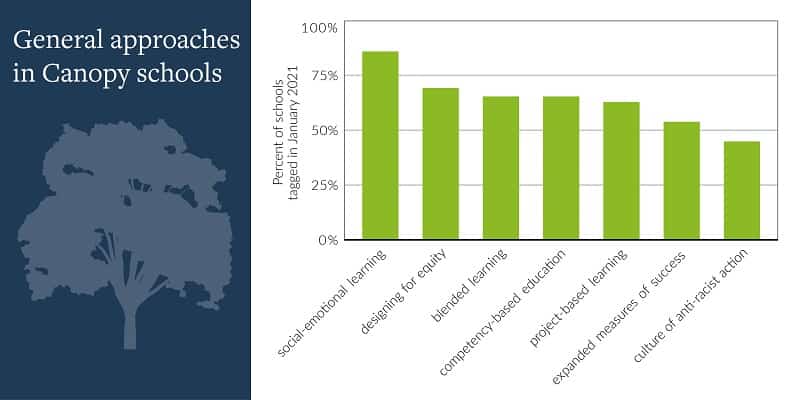
While wide-reaching, the Canopy dataset is not fully representative of all schools with innovative designs. That makes it all the more notable that the most common general approaches among January’s cohort don’t differ dramatically from the tagging rates among last fall’s cohort of 144 schools. In both cohorts, the rates for implementing social-emotional learning were higher than the rates for other general approaches. Conversely, both cohorts also tagged culture of anti-racist action least often among the seven general approaches, though a larger proportion of schools tagged it in September 2020 compared to the January 2021 cohort.
2. No practice clearly dominates as central in all innovative schools.
Although some approaches appear more frequently in the Canopy dataset, frequency can be deceiving. That’s because practices that are often-reported are not necessarily most important from schools’ perspectives. Indeed, when schools describe the practices that are most important to their models, there’s wide variation.
Canopy surveys during the pandemic prompted school leaders to choose the top five practices, from 91 total tags, that are “core” to their schools’ way of doing things. With most schools reporting dozens of practices, these five attributes—which are displayed on a school’s Canopy profile—can help people unfamiliar with the school to get a sense of its most closely-held design choices.
At first glance, the most common core practices in the new Canopy schools mirror some of the trends described above: SEL appeared as the most common core practice, followed by competency-based education and designing for equity. (Among last fall’s cohort of schools, these practices also appeared among the top core attributes in schools.)
But looking only at the most commonly-cited core practices belies a far more nuanced story. Despite the common presence of practices like SEL, less than half of schools in January named it as a core practice. And no other practice clearly dominates as core: among all 91 tags in the Canopy data, 78 were selected by at least one school leader as a core practice. The Canopy data on core practices underscores the message that there’s wide variety in schools’ innovative models, and no single set of practices defines what “innovative” means in K–12 schools.
3. Hybrid models appeared most commonly as a learning modality during COVID.
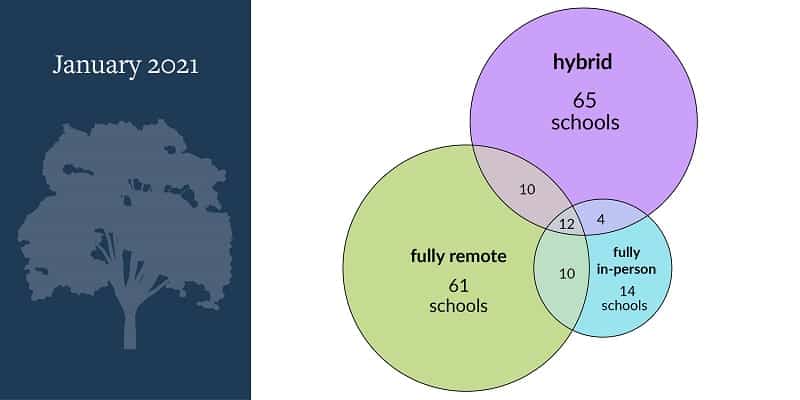
In total, 177 schools (78 that are new additions, and 99 that had been featured before) shared COVID-related practices they are implementing in January 2021. Among them, hybrid instruction was most common, followed closely by fully remote instruction. Fourteen schools reported a fully in-person model, and 26 more offered an in-person option.
That’s a change from last fall’s cohort of schools, where fully remote learning showed up clearly as most prevalent. To verify if schools have indeed changed their models over time, we examined the 99 schools for which we have both September 2020 and January 2021 data. Among these schools, fully remote instruction was most common last fall (47 schools), and hybrid notably less common (25 schools). In January, the numbers had balanced somewhat: 41 schools reported fully remote instruction, and 36 hybrid. This suggests that the increase in hybrid models in this latest batch of data is partially due to schools changing their models over time.
4. Schools are piloting a range of small-scale innovations during the pandemic.
The Canopy project focuses on documenting the practices that innovative schools are implementing schoolwide (in other words, across grade levels and departments), but many schools are experimenting with smaller-scale innovations this year. Recognizing this, we included a new survey item in January that invited leaders to highlight any promising practices that have emerged in their school so far this year, even if those practices aren’t part of their whole-school model.
60% of the 177 respondents sharing COVID-related practices described emerging innovations in their schools. Several highlighted new efforts to transition to mastery-based learning. A number of leaders reported testing changes to their staffing models, such as creating community outreach positions for staff whose jobs depend on school buildings being open, or introducing team teaching and co-teaching. One leader described teachers creating safe spaces for students to have “real talk” to process current events. Many schools reported launching virtual enrichment, showcases, field days, and career days. And several leaders described new initiatives to engage and support parents.
On the other hand, the remaining 40% of leaders either declined to share any changes or noted they had not made changes. One leader noted that the school has chosen to stick with its core model rather than try too much that’s new.
All leaders’ responses about these emerging, promising practices can be found in the full downloadable Canopy dataset under the column labeled promising_practices.
5. Charters represent a growing proportion of schools in the Canopy project.
As we look at the composition of the Canopy dataset over time, even with an ebb and flow of participation, one school variable—charter, traditional district, or independent—jumps out as changing substantially between the first Canopy survey in 2019, and the two most recent surveys.
In 2019, the dataset we published featured nearly double the number of traditional district schools compared to charter schools, leading the project to be featured in an Education Week op-ed titled “Stop Ignoring the Innovation That Happens in Traditional Public Schools.” During COVID, however, the numbers of charter and traditional district schools participating in the project are neck-and-neck, with charters only slightly trailing traditional district schools.
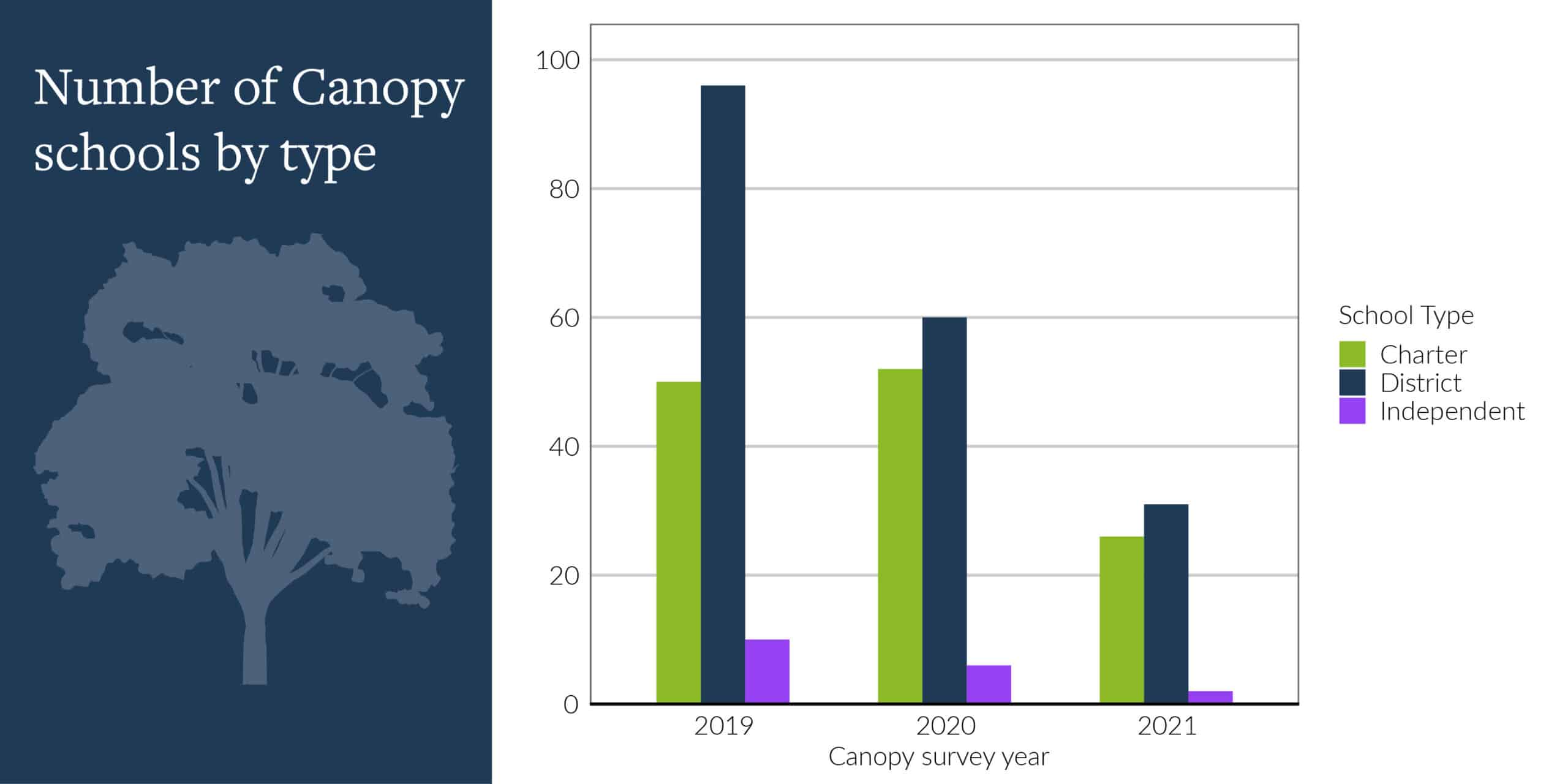
This should not lead us to conclude definitively that district schools aren’t innovating, or that charters are innovating more. (A range of factors, including the unique Canopy methodology that depends on the participation of nominators and schools, contribute to producing these numbers.) Nevertheless, it may be worthwhile for researchers to investigate the relative impact that the pandemic has had on innovation in charters versus traditional district schools.
Somewhat surprisingly, the changing composition of Canopy data on charter status isn’t matched by major changes in other contextual variables. For example, the proportions of urban, suburban, and rural schools in the Canopy have remained quite stable over all three rounds of data collection so far. (Urban schools are more than twice as numerous as rural schools, and suburban schools are least common.) Demographics, too, such as the percentage of students with different racial or ethnic identities, students with disabilities, and English language learners, have not changed demonstrably over time, even as the schools featured in the data change.
These five trends only scratch the surface of a growing dataset that can reveal important patterns in the evolution of school innovation efforts. To dig in further, we invite school and district leaders, non-profit representatives, and state agency leaders to join the Canopy project co-chairs from Transcend and the Christensen Institute for a webinar hosted by the Aurora Institute on March 10.

